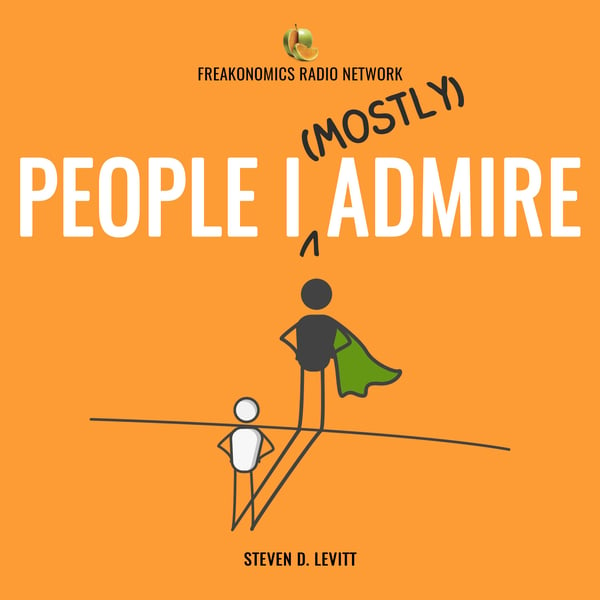65. A Rockstar Chemist and Her Cancer-Attacking “Lawn Mower”
People I (Mostly) Admire
Freakonomics Radio + Stitcher
4.6 • 1.9K Ratings
🗓️ 5 March 2022
⏱️ 51 minutes
🧾️ Download transcript
Summary
Transcript
Click on a timestamp to play from that location
| 0:00.0 | My guest today, Carolyn Potosi, is an absolute superstar chemist. |
| 0:10.0 | She created a new field of chemistry called bio-orthogonal chemistry, and she's also had |
| 0:15.3 | a transformational impact in the area of glyobiology. |
| 0:18.9 | She's been elected to the National Academy of Sciences and won all sorts of awards, including |
| 0:23.5 | a MacArthur Genius grant, and her ideas have been the basis for launching almost a dozen |
| 0:28.0 | startups. |
| 0:30.2 | Part of it is just the challenge, can we actually make a medicine that is like a lawnmower? |
| 0:35.2 | Can we actually make a tuberculosis diagnostic test from these fluorescent sugars? |
| 0:42.4 | Welcome to People I mostly admire with Steve Levin. |
| 0:48.1 | Of all the guests I've had on this show, I would say, Carolyn is the one whose work I understand |
| 0:53.1 | the least going into the conversation. |
| 0:55.6 | I tried reading a few of her academic papers, but I couldn't make any sense of them. |
| 1:00.4 | I'm really looking forward to the challenge of trying to keep up with her and learn something |
| 1:04.5 | new. |
| 1:05.5 | And if that fails, well, I guess we'll be reduced to talking about our favorite metal |
| 1:09.7 | bands, because believe it or not, in addition to her academic exploits in college, Carolyn |
| 1:15.1 | played in a band with legendary rage against the machine guitarist Tom Morello. |
| 1:24.1 | Carolyn, so let me be totally straight with you. |
| 1:26.6 | I know virtually nothing about chemistry, and what tiny bits I'm familiar with would |
| 1:31.7 | be examples of chemistry from the 1800s, Sir Humphrey Davy using electrodes to identify |
| 1:38.0 | new elements and men to live in the periodic table, discovery of DNA, and the double helix |
| 1:43.8 | view of the work of Rosalind Franklin and Watson and Crick. |
... |
Please login to see the full transcript.
Disclaimer: The podcast and artwork embedded on this page are from Freakonomics Radio + Stitcher, and are the property of its owner and not affiliated with or endorsed by Tapesearch.
Generated transcripts are the property of Freakonomics Radio + Stitcher and are distributed freely under the Fair Use doctrine. Transcripts generated by Tapesearch are not guaranteed to be accurate.
Copyright © Tapesearch 2025.

